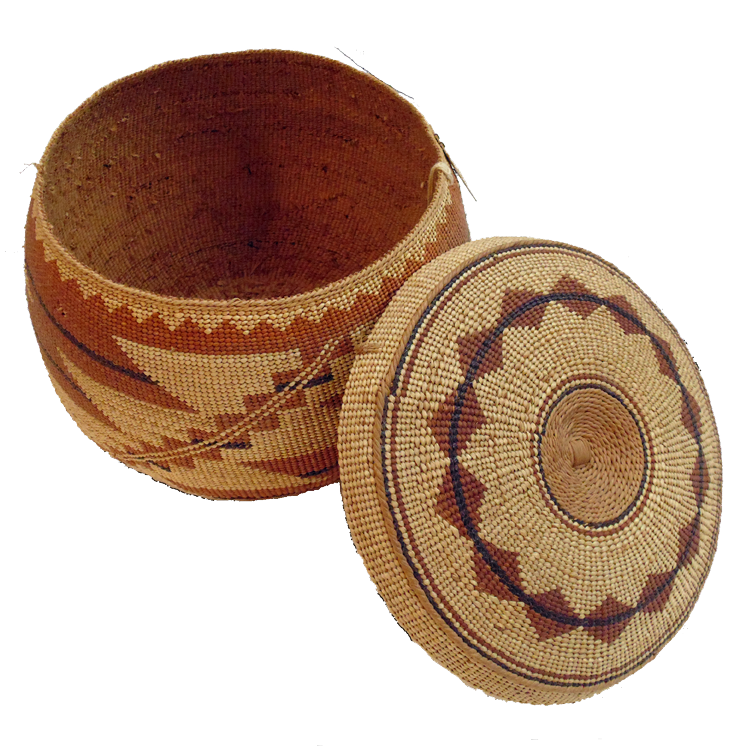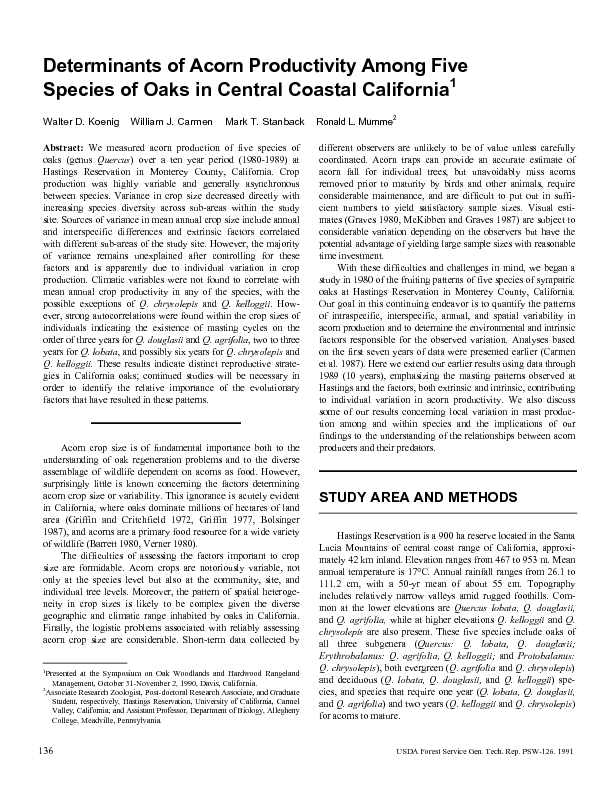Determinants of Acorn Productivity Among Five Species of Oaks in Central Coastal California
We measured acorn production of five species of oaks (genus Quercus) over a ten year period (1980-1989) at Hastings Reservation in Monterey County, California. Crop production was highly variable and generally asynchronous between species. Variance in crop size decreased directly with increasing species diversity across sub-areas within the study site. Sources of variance in mean annual crop size include annual and interspecific differences and extrinsic factors correlated with different sub-areas of the study site. However, the majority of variance remains unexplained after controlling for these factors and is apparently due to individual variation in crop production. Climatic variables were not found to correlate with mean annual crop productivity in any of the species, with the possible exceptions of Q. chrysolepis and Q. kelloggii. However, strong autocorrelations were found within the crop sizes of individuals indicating the existence of masting cycles on the order of three years for Q. douglasii and Q. agrifolia, two to three years for Q. lobata, and possibly six years for Q. chrysolepis and Q. kelloggii. These results indicate distinct reproductive strategies in California oaks; continued studies will be necessary in order to identify the relative importance of the evolutionary factors that have resulted in these patterns.Provenance: Contributed to Sípnuuk by Sípnuuk Digital Library Staff, Administration and Consultant in association with work on AFRI Food Security Project funded by USDA 2012-68004-20028


